“Goya!” I scribbled enthusiastically in the first moments of La Pepa. “Dos de Mayo! Art as witness to history!” Despite the clichéd use of flickering strobes and a stock “chaotic” soundtrack of shouts and crashes, this opening scene purporting to represent the Spanish War of Independence (1808-1812, known in Britain as the Peninsular Wars) reminded me of the Spanish painter’s testimonies in oil to the horror and grandeur of that war; as shafts of yellow side-light pierced the blackness, unknown arms were flung up in the pose of the Tres de Mayo's doomed revolutionary before a firing squad.
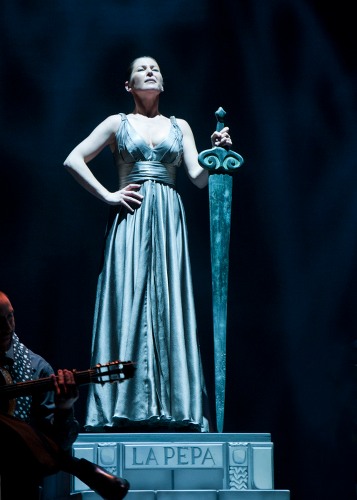 La Pepa is the nickname for the 1812 Spanish Constitution of Cádiz, which happens to be the hometown of Sara Baras. This show, created for the constitution’s bicentenary, clearly wants to offer us some new kind of knowledge and appreciation of La Pepa - but is it a homage? A history? A ritual reenactment? The Goya moments, the great stone arches of the set, and the historical costumes of the dancers might suggest a piece of impassioned historical storytelling, a Spanish Les Misérables-cum-courtroom drama. But flamenco, a dance form with no real mime or narrative tradition, can’t sustain anything as complex as history.
La Pepa is the nickname for the 1812 Spanish Constitution of Cádiz, which happens to be the hometown of Sara Baras. This show, created for the constitution’s bicentenary, clearly wants to offer us some new kind of knowledge and appreciation of La Pepa - but is it a homage? A history? A ritual reenactment? The Goya moments, the great stone arches of the set, and the historical costumes of the dancers might suggest a piece of impassioned historical storytelling, a Spanish Les Misérables-cum-courtroom drama. But flamenco, a dance form with no real mime or narrative tradition, can’t sustain anything as complex as history.
Baras herself suggests La Pepa is “a feeling, an attitude, a way of being”. Fair enough, but this kind of contention loads her show with the burden of representing (her words again) “the horror of a war, the beauty of the land, the importance to create [sic] an historical constitution in the whole world; the influence, the hope, the happiness, the life and freedom.” Clearly Baras has no doubt she is up to it; a woman of granite-dense stage presence (like her compatriot Eva Yerbabuena), she confidently appears at the end, Statue of Liberty-like, on a pedestal labelled La Pepa (pictured, above right), as if she herself embodies her nation, its history, and the spirit of freedom.
But whether we in the audience can accept that kind of claim depends on whether one accepts flamenco as some kind of embodiment of the Spanish soul. For those who do, the blistering intensity of Baras and her co-performers will justify their grand aspirations. This is no gentle, folksy dance form. The cliché of labelling flamenco "passionate" is trying to get at the fact that a dance requiring so much tension in the body, and transmuting that tension into so much noise, must be feeding off the strong emotions: anger, grief, love. The same emotions form the soundtrack, heard in the mournful wailing of the singers, insistent as a call to prayer, and the blistering cajón duet played by Antonia Suárez and Manuel Muñoz – a high point for me, and one touchingly capped by the performers embracing in self-congratulatory exhaustion.
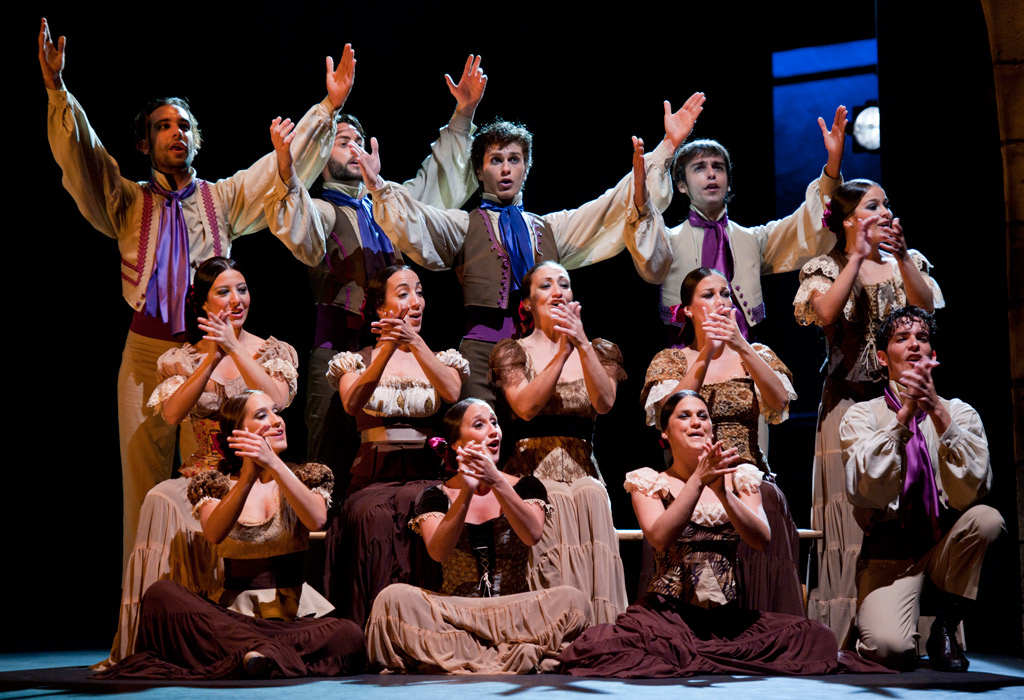 The thrill of flamenco is all about percussion: the relentless Gatling-gun barrage of sound from feet stamping so furiously the eye sees only a blur, as well as the drum-cadenza exhilaration of broken, syncopated, and ornamented rhythm. The speed is incredible – a woodpecker going at this rate would fell an oak tree in an hour, while a pianist might manage the same volume of notes, but she has ten fingers; the flamenco artist only four (the front and back of each foot). With virtuosic skill, Baras and her male counterpart José Serrano amply demonstrate the stunning power of this dance form in the hands (and feet) of masters (and they could have done so without mikes on their shoes, an invasive annoyance in an overamplified performance.)
The thrill of flamenco is all about percussion: the relentless Gatling-gun barrage of sound from feet stamping so furiously the eye sees only a blur, as well as the drum-cadenza exhilaration of broken, syncopated, and ornamented rhythm. The speed is incredible – a woodpecker going at this rate would fell an oak tree in an hour, while a pianist might manage the same volume of notes, but she has ten fingers; the flamenco artist only four (the front and back of each foot). With virtuosic skill, Baras and her male counterpart José Serrano amply demonstrate the stunning power of this dance form in the hands (and feet) of masters (and they could have done so without mikes on their shoes, an invasive annoyance in an overamplified performance.)
Their grand solos go on far too long too, in a production which at two hours is already stretching patience. I would have liked to see more of the actually rather good choreography Baras has made for her supporting dancers. In corsets and tiered skirts (the women) and fetching sashed shirts and knee boots (the men), the eager dancers of the corps (pictured above left) have the isn’t-this-jolly smiles of a chorus line, and manage in their synchronicity and uniformity to suggest the weight of a national story, a national tradition. Baras is incredible yes, but why does she get to wear a totally anachronistic 1920s-meets-1990s fringed number while everyone else is in period costume? It jars, and more than that, it illustrates what’s not quite right here: though this show features many other performers, and purports to tell a story valid for all Spain, if not all time, it is really all about Sara Baras. For lovers of flamenco and of Sara that might be enough, but if you’re looking for art to tell you about Spanish history, better stick to Goya.
- La Pepa is at Sadler's Wells as part of their Flamenco Festival until 8 March.

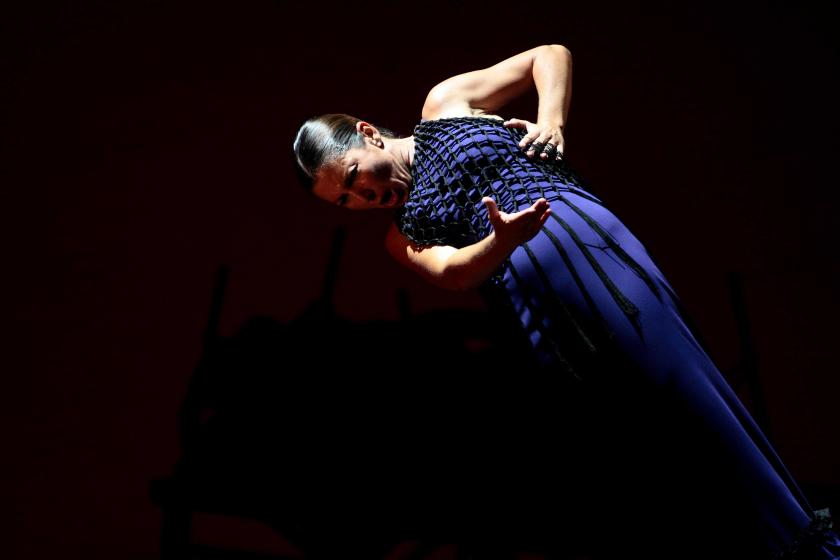

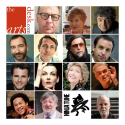
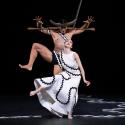








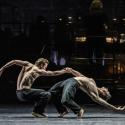
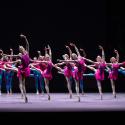
Add comment